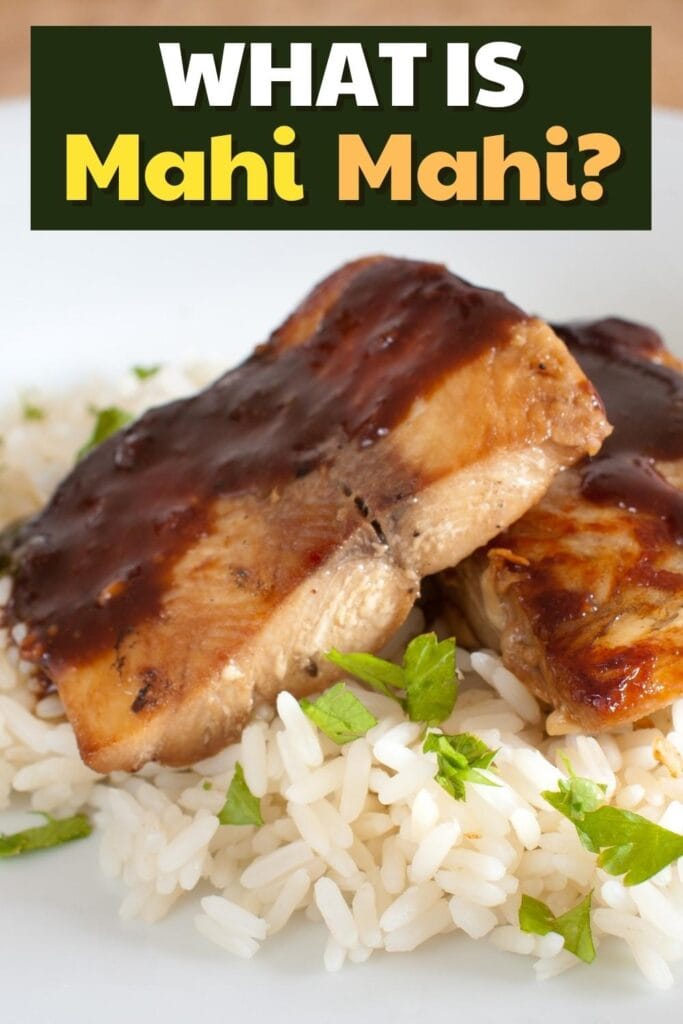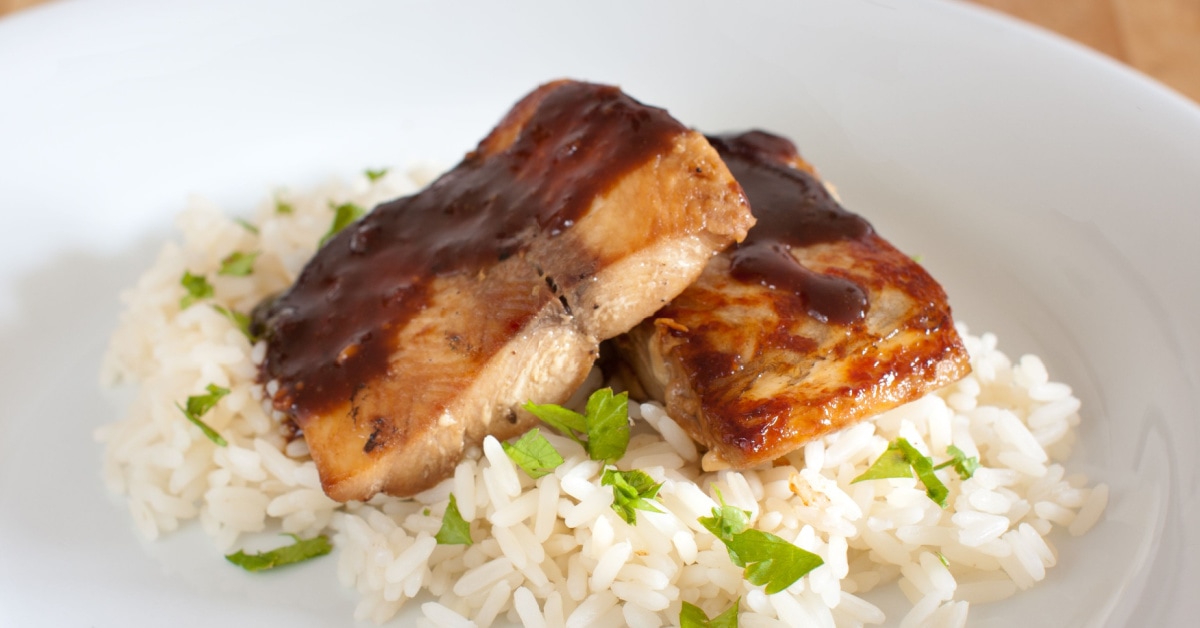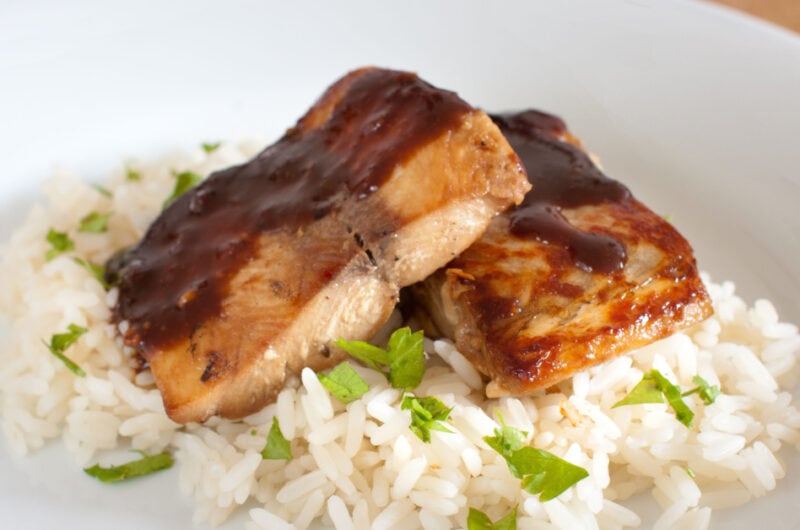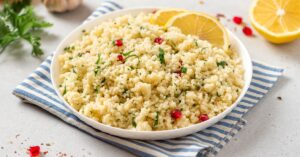Since you’ve found this post, I’m guessing you’re wondering, ‘what is mahi mahi?‘ Or maybe you need a few recipes.
Either way, I’ve got you covered!
Mahi mahi is a popular fish similar to halibut or swordfish in terms of its mild, lightly sweet taste and flaky yet dense texture. Also known as the dolphinfish, it’s usually vibrant green and blue with some gold coloring in the sunlight and can weigh anywhere between 15 and 30 pounds.
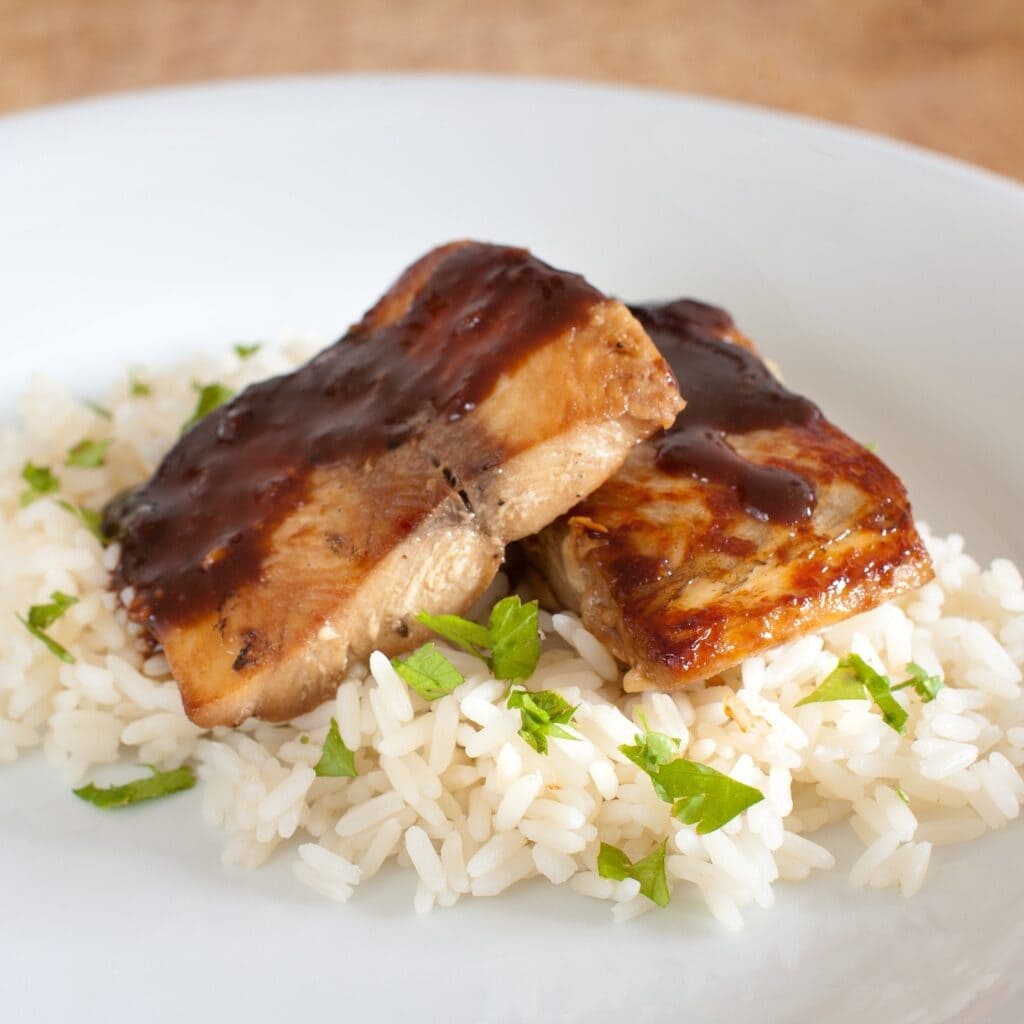
Like most fresh fish, mahi mahi is absolutely delectable with just a few added herbs and spices.
And your whole family will love it!
So stop wondering ‘what is mahi mahi?’ and check out this quick guide! From taste and cooking tips to storage and recipes, I’ve got it all!
What is Mahi Mahi?
Mahi mahi is a surface-dwelling fish with a long-body and blunt face. It often swims alongside boats like dolphins, which is how it got its other name, the dolphinfish. Typically found in tropical and subtropical waters all over the world, it can be grilled, steamed, baked, or cooked as steaks.
Mahi mahi is the Hawaiian name, meaning “strong” because these bad boys are powerful swimmers.
They have pale pink flesh that’s pretty lean. But while it doesn’t have the same amount of healthy fats as salmon, it’s still good for you.
Another name for this fish is the dorado, which it gets from its appearance – beautiful, with bright blue and green scales.
But in the sun, it’s iridescent and golden!
Here’s some more fun mahi mahi facts:
- Mahi mahi is a saltwater fish.
- It’s most often found in the warm Mediterranean, South Pacific, and Caribbean waters.
- It’s also known to swim through the Gulf of Mexico and the Atlantic.
- Mahi mahi can range in size from 3-6 feet long and weigh up to 30 pounds (though one record-setting fish weighed in at 50 pounds!)
- Dolphinfish are sustainable because they’re not over-fished and have a short life cycle – so the populations are well maintained.
You can find mahi mahi pretty easily in the United States. Just check your local store in the frozen aisle.
Or head to your nearest fishmonger for fresh filets.
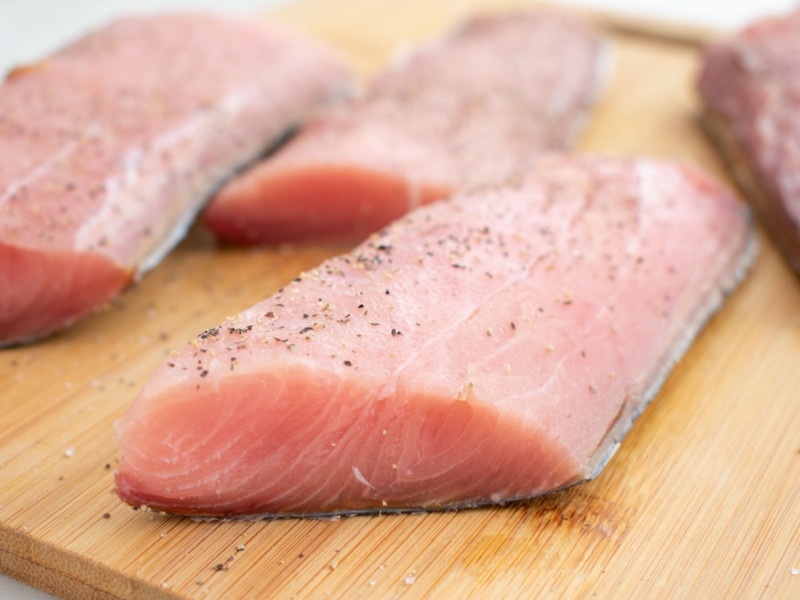
What Does Mahi Mahi Taste Like?
Tender. Moist. Delicious.
What more can you ask for?
Mahi mahi has a mild yet lightly sweet taste. It’s not overly fishy, and the flesh is quite firm and lean. In some cases, it can be almost meaty, making it ideal for grilling as steaks. Many people think it tastes similar to swordfish, though the darker meat will have a more pronounced flavor.
It’s pretty flaky, and fresh mahi mahi should smell like the ocean. However, if the flesh is soft and overly fishy, it is not fresh.
You’ll notice that the pale pink meat turns white as it cooks. Though parts of darker meat can be more gray-white when cooked.
How to Cook Mahi Mahi
Mahi mahi is very versatile. And so are the cooking methods. They include:
- Pan-seared
- Grilled
- Baked
- Fried
- Batter fried
- Steamed
- Broiled
I think the best methods are pan-searing, grilling, or baking because they preserve the most flavor. But you do you!
Mahi mahi also makes fabulous burgers and sandwiches. It also is really yummy in soup.
Basically, mahi mahi can do it all!
Mahi Mahi Filets vs Whole
Most mahi mahi filets will have no bones. But if they do, they’re relatively easy to remove after cooking.
Of course, if you buy a whole mahi mahi, you’ll have to remove the bones yourself.
Either way, you can cook mahi mahi with the skin on or off. But leaving the skin on helps protect the fish from overcooking.
That said, the skin isn’t usually edible. It’s quite thick and tough, so it’s almost always either cut away after cooking or left on the plate.
Just be aware that mahi mahi is a very lean fish. So, no matter the cooking method, you need to pay attention to it.
There’s nothing worse in the culinary world than dry, overcooked fish.
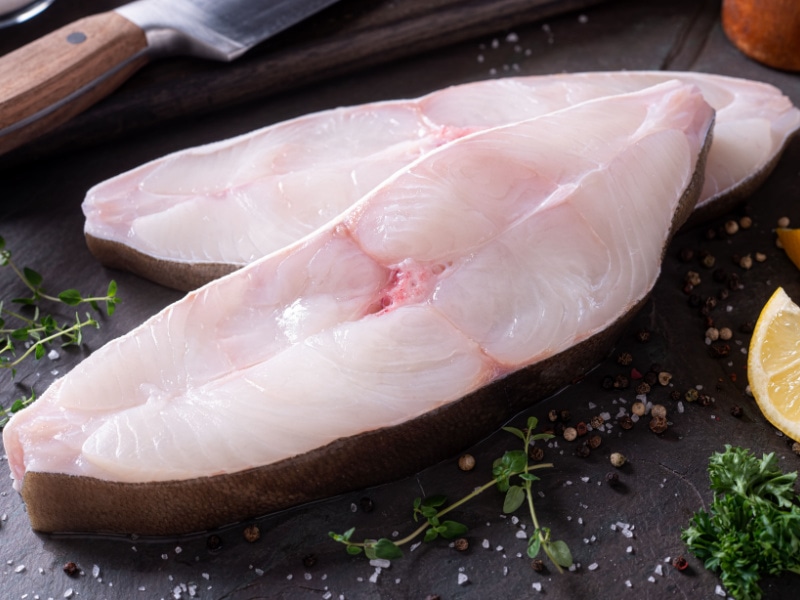
Mahi Mahi vs. Halibut
Both fish are delicious, with similar textures and flavors. And both are saltwater fish.
But there are several differences between the two.
- Mahi mahi prefers warm waters, halibut prefers cool waters. Halibut is more often found in deeper parts of the Pacific.
- Halibut is much larger than mahi mahi. It is a type of flounder, and it can grow past 500 pounds in weight!
- Both fish taste wonderful, but mahi mahi has a more tropical flavor. As for texture, halibut is a little bit flakier.
- Both fish are a healthy choice. Although, halibut rates a little better in the nutrition department.
- Halibut is generally more expensive than mahi mahi. That’s why I prefer mahi mahi.
How to Store Mahi Mahi
You can store fresh mahi mahi in the back of the refrigerator for 2-3 days, wrapped tightly in plastic wrap.
It also freezes really well!
Wrap the filets tightly in plastic wrap and add them to a freezer bag or an airtight container.
If you have a vacuum sealer, use that! This is the best way to prepare them for the freezer.
And, of course, if you purchased pre-packaged, frozen filets, just put them directly in the freezer.
Frozen mahi mahi will last for several months.

Best Mahi Mahi Recipes
With such a versatile fish, you can make numerous delicious dishes. And from several different cultures and cuisines.
With mahi mahi, you can please any palette.
And that’s a fact!
The three mahi mahi recipes below are some of my favorites.
But the ginger-glazed mahi mahi is the absolute best! So, I included that recipe for you at the bottom.
Enjoy!
1. Mahi Mahi in Lemon Garlic Cream Sauce
This delectable dish is light, bright, and perfect for any weeknight dinner.
The fish is perfectly spiced in a mix of garlic powder, paprika, onion powder, and paprika (plus salt & pepper).
Then, it’s pan-fried to perfection.
Add a creamy, garlicky, lemony sauce, and you won’t be able to resist a second piece.
2. Tomato Basil Mahi Mahi Recipe
Simple does not mean boring. And this mahi mahi recipe proves it.
It features butter-seared mahi mahi served with garlic, shallots, basil, and sun-dried tomatoes.
It’s savory, it’s fresh, and it tastes like a Mediterranean dream. Serve with your favorite pasta and veggies.
3. Blackened Mahi Mahi with Mango Salsa
Every bite of this fantastic mahi mahi dish bursts with summery freshness. It’s a little sweet and a whole lot of savory.
You’re gonna love it.
This recipe features mahi mahi rubbed with smoky, flavorful, savory spices. It’s then pan-seared until blackened on the outside and white inside.
And when you add the incredibly fresh, sweet, and spicy mango salsa? You’ll send your taste buds directly to flavor heaven.
P.S. These make fantastic tacos!
